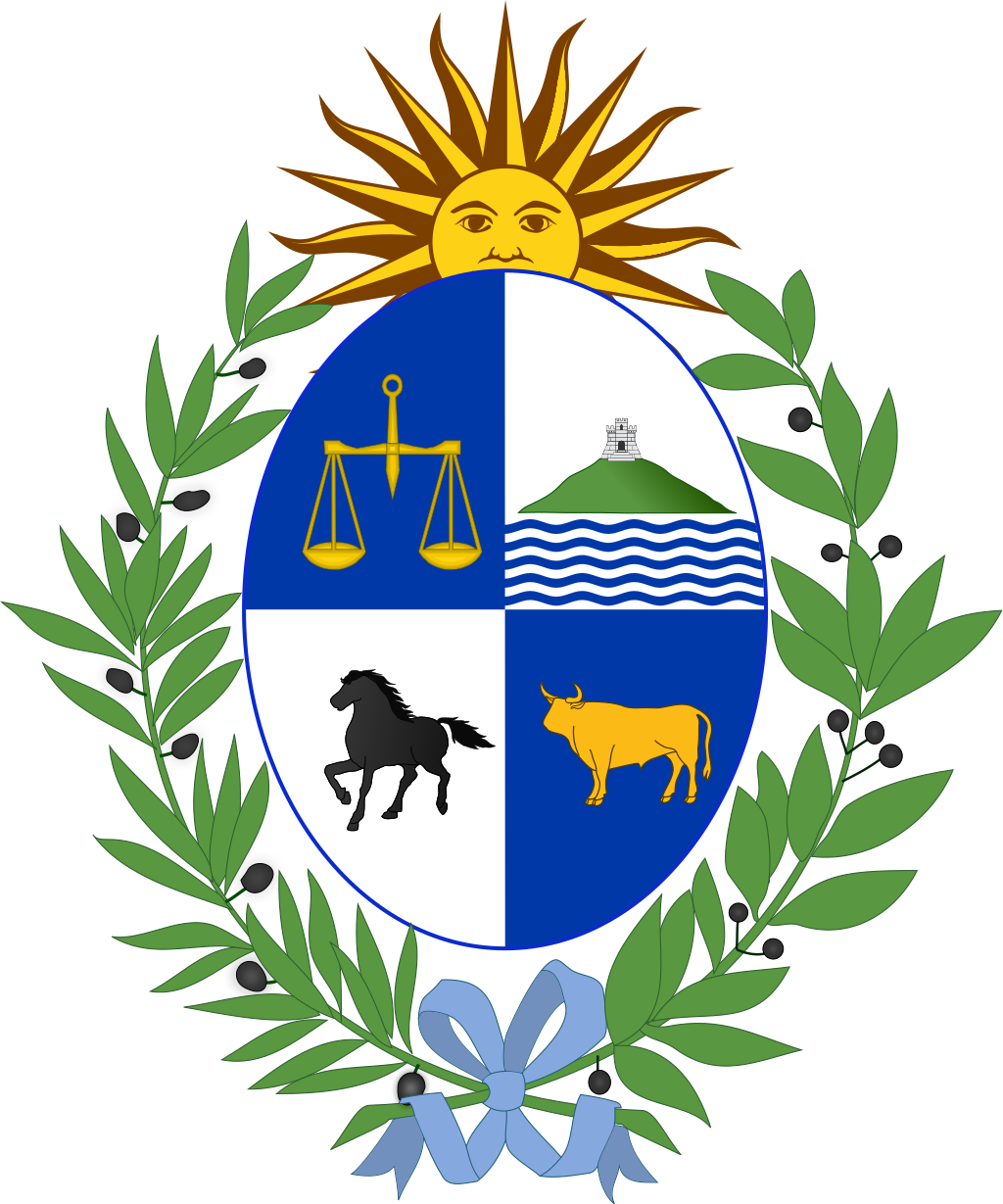About UY

Location
Uruguay is located in the southeastern region of South America, bordered by Argentina to the west and Brazil to the north and east. It is also bordered by the Atlantic Ocean to the southeast.
Capital
The capital city of Uruguay is Montevideo.
Population
As of the latest estimates, Uruguay has a population of approximately 3.5 million people.
Area
Uruguay covers an area of about 176,215 square kilometers (68,037 square miles), making it the second-smallest country in South America after Suriname.
Official Language
The official language of Uruguay is Spanish.
Government
Uruguay is a representative democratic republic with a presidential system. The President serves as both the head of state and government. The country has a multiparty system and operates under a constitutional framework.
Independence
Uruguay declared independence from the United Kingdom of Portugal, Brazil, and the Algarves on August 25, 1825.
Currency
The currency of Uruguay is the Uruguayan peso (UYU).
Economy
Uruguay has a mixed economy with a strong emphasis on agriculture, services, and manufacturing. The country is a leading producer and exporter of beef, wool, and soybeans. Additionally, Uruguay has developed a significant services sector, including tourism, finance, and telecommunications.
Natural Features
Uruguay is characterized by rolling plains and low hills, with a coastline stretching along the Atlantic Ocean. The country has several rivers and lagoons, including the Uruguay River, which forms part of the border with Argentina. Uruguay is known for its beaches, including popular resort towns such as Punta del Este and Piriápolis.
Culture
Uruguayan culture is influenced by a mix of European, particularly Spanish and Italian, and African heritage. The country has a rich literary tradition, with notable writers such as Juan Carlos Onetti and Mario Benedetti. Music, dance, and soccer are also integral parts of Uruguayan culture.
Challenges
Uruguay faces challenges such as income inequality, unemployment, and crime. Despite being one of the more developed countries in South America, poverty and social disparities persist, particularly in rural areas and among marginalized populations.
Infrastructure
Uruguay has a relatively well-developed infrastructure, including transportation networks, telecommunications, healthcare facilities, and educational institutions. The country has invested in renewable energy sources, particularly wind and solar power, to reduce its dependence on imported energy.
International Relations
Uruguay is known for its active participation in international organizations and diplomatic initiatives. The country is a member of the United Nations, the Organization of American States (OAS), and MERCOSUR (Southern Common Market), among others.
Tourism
Uruguay attracts tourists with its scenic landscapes, historic sites, cultural festivals, and culinary offerings. Visitors come to enjoy the beaches, thermal springs, colonial architecture, and vibrant cultural scene. Punta del Este, Colonia del Sacramento, and Montevideo are popular destinations for tourists.

National Items of Uruguay
Southern Lapwing (Tero)
The Southern Lapwing (Vanellus chilensis), commonly known as the Tero, is the national bird of Uruguay. Known for its distinctive call and striking appearance, it symbolizes the country's diverse birdlife and natural beauty.
Ceibo Flower
The Ceibo flower (Erythrina crista-galli) is the national flower of Uruguay. Its bright red blossoms represent the vibrant culture and natural splendor of the country.
Ombú Tree
The Ombú tree (Phytolacca dioica) is an important national symbol of Uruguay. Known for its large size and unique appearance, it represents strength, resilience, and the open landscapes of the Uruguayan pampas.
Asado
Asado, a traditional barbecue, is the national dish of Uruguay. It represents the country's rich culinary traditions and the importance of social gatherings and family meals.
Mate
Mate, a traditional South American drink made from the leaves of the yerba mate plant, is widely consumed in Uruguay. It symbolizes the country's cultural heritage and social customs.
José Gervasio Artigas
José Gervasio Artigas is a national hero of Uruguay, known as the father of Uruguayan nationhood. He symbolizes the country's struggle for independence and its founding values.
Candombe
Candombe is a traditional Uruguayan music and dance style with African roots. It represents the cultural diversity and rich musical heritage of Uruguay.
Punta del Este
Punta del Este is a famous resort city in Uruguay, symbolizing the country's natural beauty, tourism appeal, and vibrant coastal life.

The anthem in the original Spanish language along with an English translation:
Orientales, la patria o la tumba!
Libertad o con gloria morir!
Es el voto que el alma pronuncia
y que heroicos sabremos cumplir.
Libertad, libertad Orientales,
este grito a la patria salvó,
que a sus bravos en fieras batallas
de entusiasmo sublime inflamó.
Y los libres del yugo lanzaron
y sus iras a Marte juntó,
y al estruendo febril de la lucha
los espíritus grandes vibró.
Con sus fulminadores desastres
nuestra tierra a la lucha excitó,
y en sus pechos de bronce y de hierro
de la gloria el palenque fundó.
Orientales, la patria o la tumba!
Libertad o con gloria morir!
Es el voto que el alma pronuncia
y que heroicos sabremos cumplir.
Orientals, the Fatherland or the grave!
Liberty or with glory to die!
It is the vow that the soul pronounces
and that heroically we will fulfill.
Freedom, freedom, Orientals,
this cry to the Fatherland saved,
which to its braves in fierce battles
inflamed with sublime enthusiasm.
And the free ones from the yoke cast
and their anger to Mars joined,
and to the fervent thunder of the struggle
the great spirits vibrated.
With its thundering disasters
our land to the fight excited,
and in its chests of bronze and iron
founded the arena of glory.
Orientals, the Fatherland or the grave!
Liberty or with glory to die!
It is the vow that the soul pronounces
and that heroically we will fulfill.


